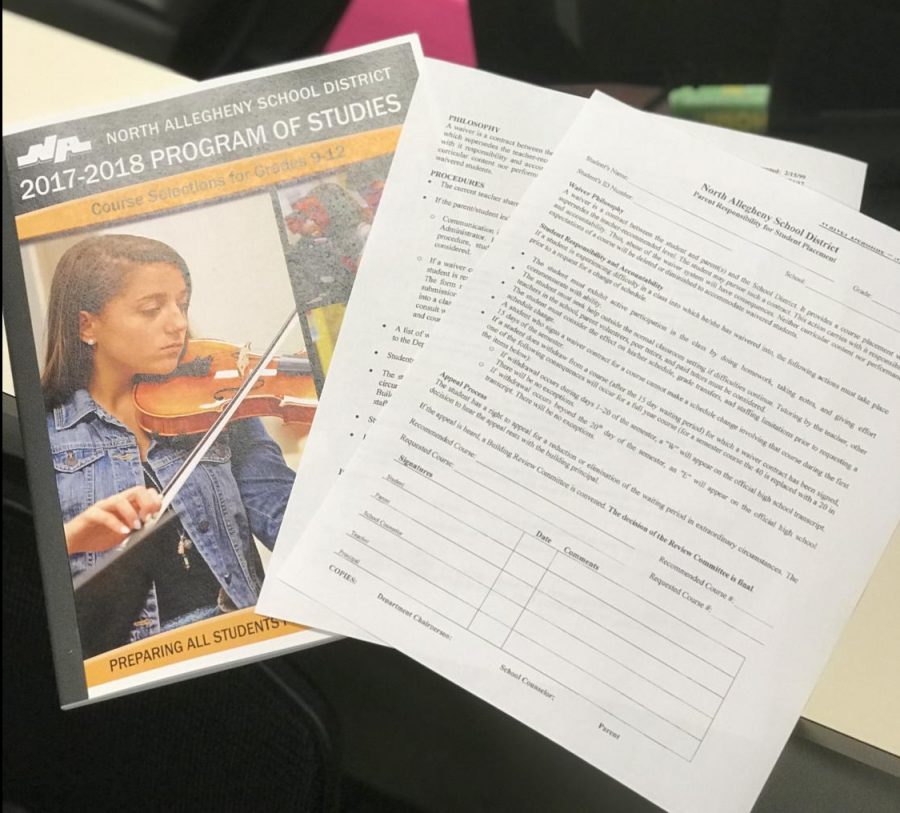Waiving Into a New School Year
Choosing classes and electives can often be one of the most stressful decisions that a high schooler has to make during the school year, due to the fact that it helps determine how their year will go.
As for the classes that students are required to take at NAI, there are varying levels of the course. Each student is recommended for one of the levels, based on their grades and test scores. However, students have the option to waive into higher level classes than they were recommended for.
In order to gain more insight into NAI students who waive, we talked to Mr.Kiggins, guidance counselor, for information and statistics.
On average, 350-400 students waive in to a different class than they were recommended for per year. When students consider waiving up a level, there are many factors to consider. According to an anonymous freshman who waived into Honors Geometry this year, one of the biggest considerations to make is, “One of the first thoughts I had to consider is whether or not I would be able to keep up in the class.”
Mr. Kiggins added, “Generally, they are successful in my opinion, however, our students tend to think that only getting an A is successful. Most get an A or a B”.
Like most decisions, there are varying motives for those who want to enroll in a class that they weren’t recommended for. Kiggins commented that, “Sometimes they [students] feel like turning over a new leaf or trying something different that’s somewhat of a challenge.”
One of the most prominent reasons for students to waive, according to the freshmen and sophomores surveyed, is due to North Allegheny’s competitiveness.
“A lot of times students don’t feel like they were recommended for the smart classes, but when they aren’t successful in their new classes, it can be stressful. For the most part, I do think NA’s competitiveness as a district contributes to it”, replied Kiggins when asked.
For those who are considering waiving into a class in the future, it may be important to know that “Some do drop the course in the beginning weeks, but usually the majority are able to stay in the class”, according statistics compiled by the counseling department.
Additionally, Kiggins informed NAEye that “Most students only have one class that they waive into, although we do have a handful who waive into more than three classes.”
Regardless of whether or not a student is waiving into classes, when the time rolls around for deciding which courses to take, it usually adds to the already prominent stress that students acquire when they partake in scheduling. The general criteria that applies to which courses a student will be recommended to take is their final grade, and occasionally their score on a state-required test. Additionally, there are several electives or study halls that an NAI Freshman or Sophomore can choose, such as art, yearbook, or leadership which do not require a waiver.
Although it may feel stressful to decide which courses would be best to schedule for future success, Kiggins suggests taking courses which students have an interest in, and not necessarily just for the sake of padding one’s GPA or appearing “smarter” in the eyes of their peers.
For information regarding specific requirements, students should consult the District’s program of studies.
Grade: Sophomore
Years on staff:2
Role: (staff writer) contributor
Life Soundtracks: New Person Same Old Mistakes; Tame...


